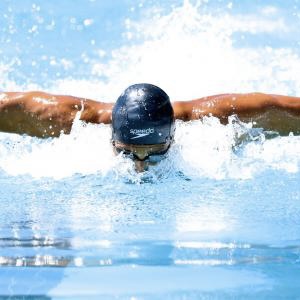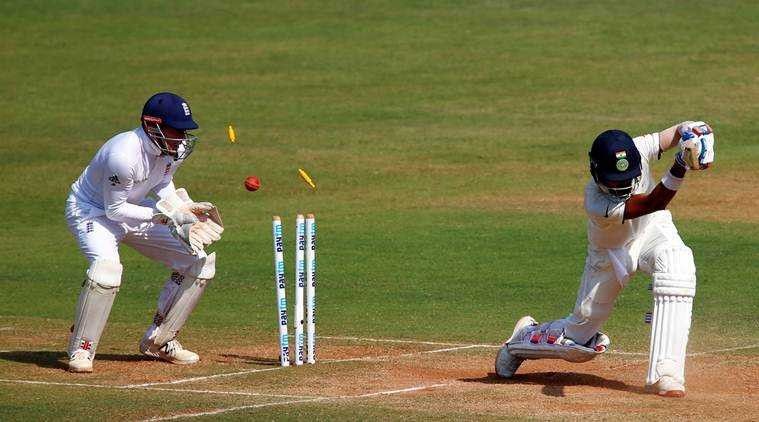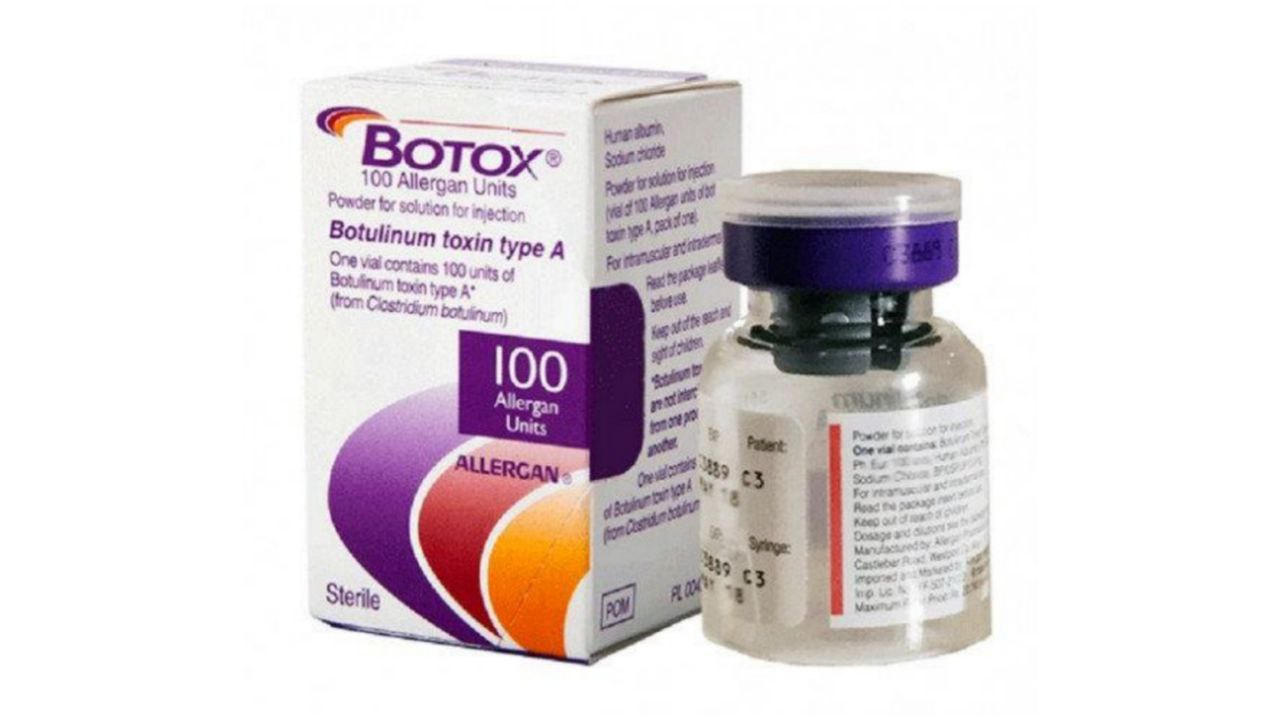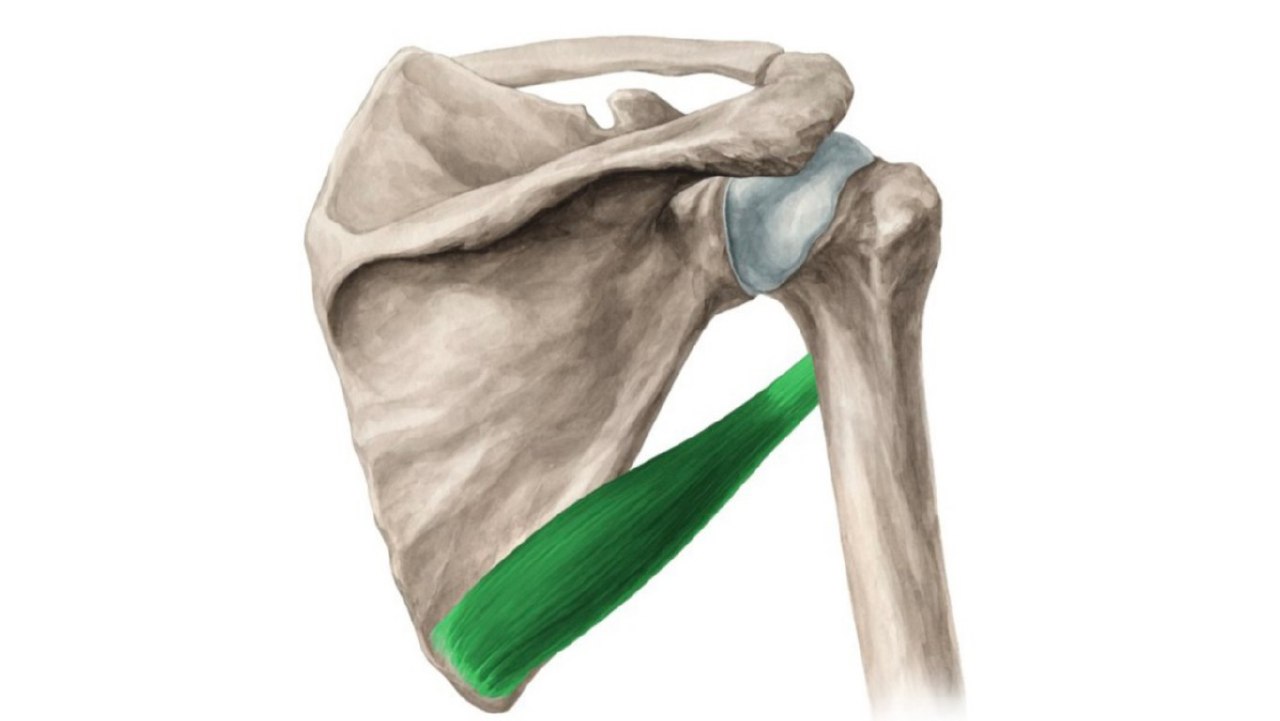
Teres Major
By : Karam AlanazIntroduction
it is one of the upper limb’s muscles ; the name of it tells us that this muscle is large and round .
whereas ; Teres means “round” and Major means “ large”
whereas ; Teres means “round” and Major means “ large”
General
*larger than the teres minor .
*attachments : Inferior Angle and Inferior Lateral Border of the Scapula and Medial Lip of the Bicipital Groove of the Humerus .
* works it’s action at shoulder joint.
* The latissimus dorsi and the teres major make up the vast majority of the posterior axillary fold of tissue that borders the axilla (armpit) posteriorly.
*attachments : Inferior Angle and Inferior Lateral Border of the Scapula and Medial Lip of the Bicipital Groove of the Humerus .
* works it’s action at shoulder joint.
* The latissimus dorsi and the teres major make up the vast majority of the posterior axillary fold of tissue that borders the axilla (armpit) posteriorly.
Supply
A) INNERVATION : by the lower subscapular nerve ( C5,C6,C7), from posterior cord of brachial plexus .
B) ARTERIAL : by The Circumflex Scapular Artery (branch of the Subscapular Artery) and the Thoracodorsal Artery (a continuation of the Subscapular Artery).
B) ARTERIAL : by The Circumflex Scapular Artery (branch of the Subscapular Artery) and the Thoracodorsal Artery (a continuation of the Subscapular Artery).

Origin
Inferior Angle and Inferior Lateral Border of the Scapula (the inferior 1⁄3 on the dorsal surface ) .
Inserion
Medial Lip of the Bicipital Groove of the Humerus( crest of the lesser tubercle) .
Note : The belly and/or distal tendon of the teres major sometimes blend with the latissimus dorsi
Note : The belly and/or distal tendon of the teres major sometimes blend with the latissimus dorsi
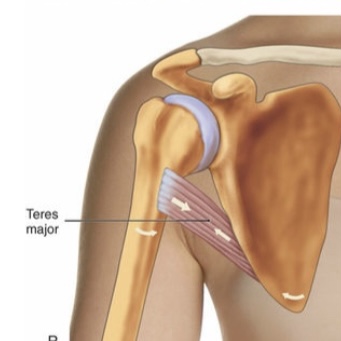
Movement(Action)
(Adducts and medially rotates shoulder joint) .
A) Standard Mover Action :
1-when the teres major contracts and the
humeral attachment is pulled toward the scapular
attachment, the anterior side of the humerus
orients medially. This movement is called medial
rotation of the arm at the GH joint, because the anterior side of the humerus rotates medially.
2-when the lateral humeral attachment is pulled toward the medial scapular attachment, the humerus is pulled toward the midline. Therefore the teres major adducts the arm at the GH joint.
B) Reverse Mover Actions :
1- If the arm is fixed and the teres major contracts, the inferior angle of the scapula is pulled up toward the humerus, resulting in upward rotation of the scapula at the GH joint. When the scapula moves relative to the arm at the GH joint, it also moves relative to the rib cage at the scapulocostal joint.
2-Because the humeral attachment is anterior to the scapular attachment, when the humeral attachment is fixed, the teres major can pull the inferior angle of the scapula anteriorly against the rib cage wall. This motion is called downward tilt of the scapula.
Notes :
* it helps in Stabilize the shoulder (GH) joint and Stabilize the scapula.
*The teres major is sometimes called the little brother or the little helper of the latissimus dorsi, because they run together between the scapula and the humerus, they attach together onto the medial lip of the bicipital groove of the humerus, and they have the same direction of muscle fibers and therefore the same actions of the arm at the GH joint (medial rotation, adduction, and extension).
A) Standard Mover Action :
1-when the teres major contracts and the
humeral attachment is pulled toward the scapular
attachment, the anterior side of the humerus
orients medially. This movement is called medial
rotation of the arm at the GH joint, because the anterior side of the humerus rotates medially.
2-when the lateral humeral attachment is pulled toward the medial scapular attachment, the humerus is pulled toward the midline. Therefore the teres major adducts the arm at the GH joint.
B) Reverse Mover Actions :
1- If the arm is fixed and the teres major contracts, the inferior angle of the scapula is pulled up toward the humerus, resulting in upward rotation of the scapula at the GH joint. When the scapula moves relative to the arm at the GH joint, it also moves relative to the rib cage at the scapulocostal joint.
2-Because the humeral attachment is anterior to the scapular attachment, when the humeral attachment is fixed, the teres major can pull the inferior angle of the scapula anteriorly against the rib cage wall. This motion is called downward tilt of the scapula.
Notes :
* it helps in Stabilize the shoulder (GH) joint and Stabilize the scapula.
*The teres major is sometimes called the little brother or the little helper of the latissimus dorsi, because they run together between the scapula and the humerus, they attach together onto the medial lip of the bicipital groove of the humerus, and they have the same direction of muscle fibers and therefore the same actions of the arm at the GH joint (medial rotation, adduction, and extension).
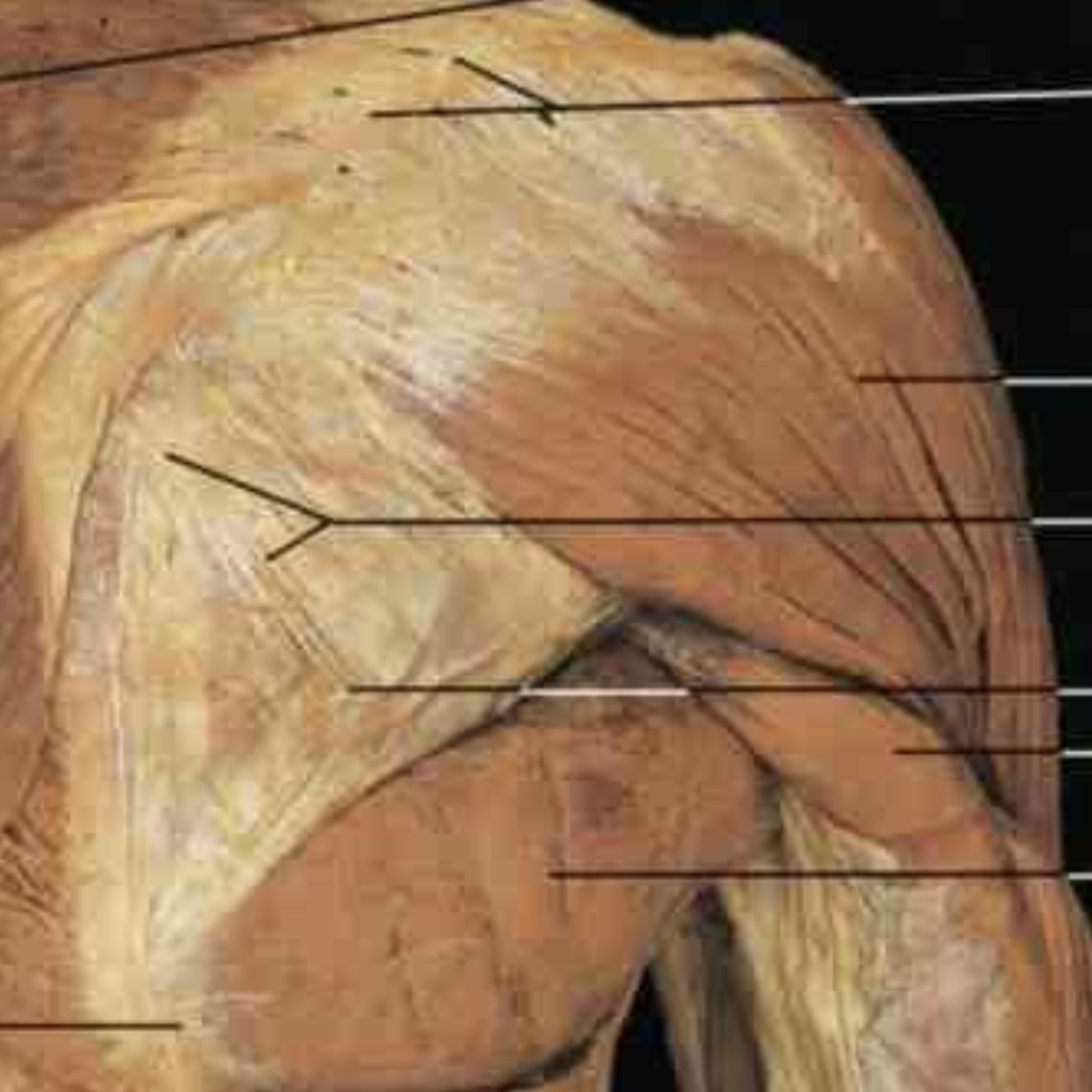
Relation
1-The teres major lies inferior to the teres minor.
2-The long head of the triceps brachii runs between the teres minor and the teres major.
3-The distal tendon of the teres major runs parallel to the distal tendon of the latissimus dorsi.
4-The teres major and the latissimus dorsi both attach onto the medial lip of the bicipital groove of the humerus. On the medial lip, the teres major attaches posterior to the latissimus dorsi. Deep to the teres major is the scapula.
2-The long head of the triceps brachii runs between the teres minor and the teres major.
3-The distal tendon of the teres major runs parallel to the distal tendon of the latissimus dorsi.
4-The teres major and the latissimus dorsi both attach onto the medial lip of the bicipital groove of the humerus. On the medial lip, the teres major attaches posterior to the latissimus dorsi. Deep to the teres major is the scapula.
clinical note
1-how do you examine the teres major ?
The patient is addoctor and elevator upper limb against resistance, you can see the muscle belly of the teres major m. and can acutely
feel it .
2-Stretch or impact injuries to the teres major muscle sustained while playing sports as swimming ,make car’s accidents and falls onto the lateral scapula are lead to the teres major injuries, may result in the development of myofascial pain in the teres major muscle,injuries result in pain and difficulty with activities that require sideways or backwards movements with the arm
3-tears of the teres major are quite uncommon, but may occur in baseball or cricket players.
The patient is addoctor and elevator upper limb against resistance, you can see the muscle belly of the teres major m. and can acutely
feel it .
2-Stretch or impact injuries to the teres major muscle sustained while playing sports as swimming ,make car’s accidents and falls onto the lateral scapula are lead to the teres major injuries, may result in the development of myofascial pain in the teres major muscle,injuries result in pain and difficulty with activities that require sideways or backwards movements with the arm
3-tears of the teres major are quite uncommon, but may occur in baseball or cricket players.
